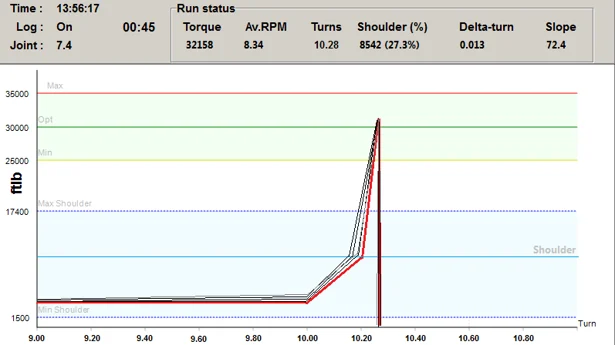How to tell which connection is causing a casing leak

Let’s say you have 4000 meters of casing in place. You run the pressure tests, and your numbers are just not right. You go through the procedures again, but the deviation is still there. How can you tell wich of the several hundred connections causing the casing leak? Is it the one on 150 meters, or the one on 3750 meters? It is a guessing game, and your only option is to pull the whole casing. Or, is it?
The cost of pulling a casing is more often than not astronomical. The cost of the work itself is one ting, but the cost of NPT that could last for weeks is something every sensible oil professional would fear and loathe.
Despite all measures taken
The absolute primary and best solution to this danger lurking in the deep is to prevent it from happening. All the precautions taken from pipe manufacturing to applying dope on the threads serves this purpose: Keeping the connections tight and the seal intact. The careful training of the crew and the high focus on QHSE result in a tremendous track record when it comes to protecting the seal. Although all these measures are taken, every year or the other, a connection that is not tight is run in the hole.
Graphs with high resolution
What do you do when the damage is done? Some pieces of advice are more valuable than others. The most profitable one is the one you get before you start casing the well: Keep a record of the make-up graphs.
At OWS we advocate the Top Drive Casing Running method. In several blog articles we have highlighted the benefits and suggested solutions to the challenges. However, what has been treated as a hidden secret so far is the ability to read MU-graphs with a high resolution.
The valuable parameters
Well, the solution is simple, yet powerful. A tiny make-up torque sub is installed in the top drive and assembled with the CRT tool from OWS (TDCRTi). It reads impulses from the rotation of the steel to monitor torque turn continuously. This information is wirelessly transmitted to a laptop in the driller’s cabin. OWS patented software presents the information as detailed graphs.
This unique software is developed in the OWS computer workshop, and it analyzes the torque on a deeper level and with much more precision than what is possible with the top drive only. You connect your laptop to the Torque Turn Sub via WiFi, and the casing operator gets a full picture of all the relevant criteria for every connection:
- MU torque
- The number of turns
- Slope
- Delta turn
- When the pin has reached the shoulder and sealing area and all recommended criteria for acceptable make-up are met
All the information is documented by the software and sent onshore for client approval. Then you go on to the next section, and you reprogramme the software with the relevant criteria for the connections in question.
What do you need to know?
Although it might seem a bit out of proportions to record all the graphs, this is valuable in more than one aspect:
- You document that all your connection are made up the way the manufacturer say they should.
- Your client gets a trustworthy documentation on all the connections
- In a rare situation of a broken seal, this is where you start analyzing to find what might cause the leakage.
After all, the Torque Turn Sub is integrated with the TDCRTi, and the added benefit from this powerful little sub outweighs by far the modest extra costs.
Topics: TRS

By: Eirik Egeskog
Eirik is development supervisor at OWS. His work includes the OWS patented Torque Turn Sub.


